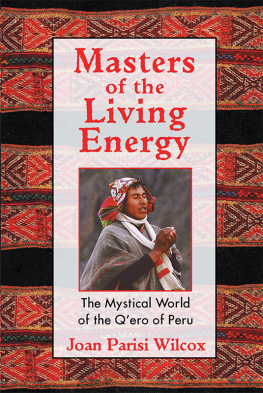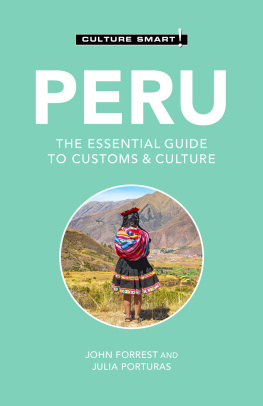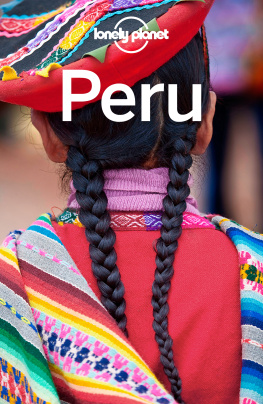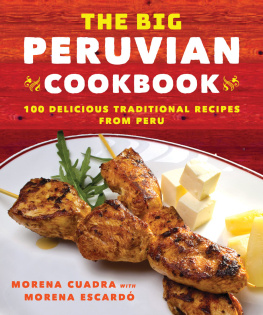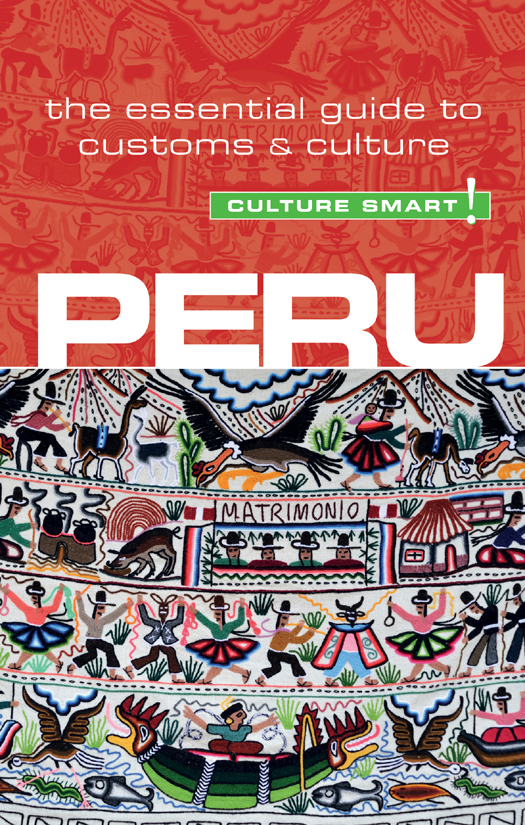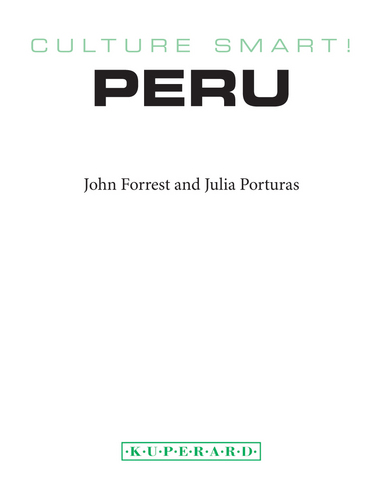eISBN: 978-1-85733-668-9
British Library Cataloguing in Publication Data
A CIP catalogue entry for this book is available from the British Library
First published in Great Britain 2006
by Kuperard, an imprint of Bravo Ltd
59 Hutton Grove, London N12 8DS
Tel: +44 (0) 20 8446 2440 Fax: +44 (0) 20 8446 2441
www.culturesmart.co.uk
Inquiries:
Distributed in the United States and Canada
by Random House Distribution Services
1745 Broadway, New York, NY 10019
Tel: +1 (212) 572-2844 Fax: +1 (212) 572-4961
Inquiries:
Series Editor Geoffrey Chesler
Cover image: Traditional embroided textile from Peru. iStockphoto.com
The photographs on by permission of Ana Maria Parodi Mathorel.
Images on the following pages reproduced under Creative Commons Attribution-Share Alike 3.0 Unported license: WEBSTER 1991
Reproduced under Creative Commons Attribution-Share Alike 2.0 Generic license: One Laptop Per Child
Copyright 2006, 2012 Kuperard
Revised and updated edition 2012
All rights reserved. No part of this publication may be reprinted or reproduced, stored in a retrieval system, or transmitted in any form or by any means without prior permission in writing from the publishers.
Culture Smart! is a registered trademark of Bravo Ltd.
v3.1
About the Authors
JOHN FORREST is a teacher and writer based in London. He first traveled to Peru in 1981, after graduating with a BA Comb. Hons in Geography and Statistics from Exeter University. He returned to Peru regularly to lead study tours and to research, write, and publish his own travel guide. He is a committee member of the Anglo-Peruvian Society and continues to visit Peru as Chairman of the Tambopata Reserve Society.
JULIA PORTURAS was born in Peru and studied at La Catlica University in Lima and Birkbeck College, London. She graduated with a BA Hons in Hispanic and Latin American Studies. In Peru, she worked for several years for a major state enterprise, and she is now an administrator in London.
John and Julia are both contributors to Footprints Peru guides.
The Culture Smart! series is continuing to expand. For further information and latest titles visit
www.culturesmart.co.uk
The publishers would like to thank CultureSmart! Consulting for its help in researching and developing the concept for this series.
CultureSmart! Consulting creates tailor-made seminars and consultancy programs to meet a wide range of corporate, public-sector, and individual needs. Whether delivering courses on multicultural team building in the USA, preparing Chinese engineers for a posting in Europe, training call-center staff in India, or raising the awareness of police forces to the needs of diverse ethnic communities, it provides essential, practical, and powerful skills worldwide to an increasingly international workforce.
For details, visit www.culturesmartconsulting.com
CultureSmart! Consulting and CultureSmart! guides have both contributed to and featured regularly in the weekly travel program Fast Track on BBC World TV.
contents
Map of Peru
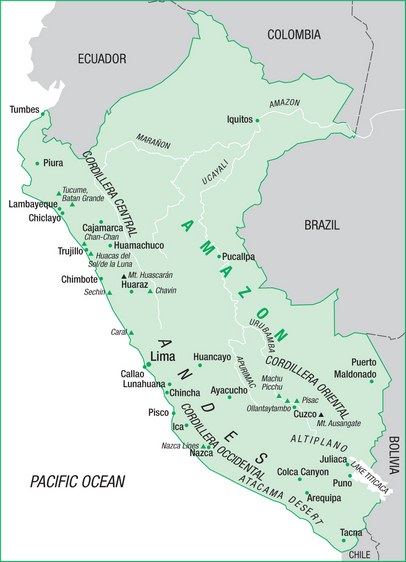
introduction
In the popular imagination, Peru conjures up images of mysterious ancient civilizations, awe-inspiring Inca cities, conquistadores risking all in their search for gold, spectacular Andean scenery, incredible biodiversity, and colorful woven textiles. There is much more to it than this.
Of all the South American countries Peru has the greatest variety of food and music, and the widest extremes of climate and landscape. It has the riddle of ancient lines in the desert, and modern-day intrigue and political scandal. Add to this potent mix the friendly nature of its people, and Peru is a country that has to be experienced!
This is a land of huge contradictions. It has plentiful natural resources, from which the majority of Peruvians derive relatively little benefit. It is a country that was the basis for the largest empire in the Americas, but which has seen nearly two hundred years of political chaos; a country with a long Pacific coastline, yet is half-covered with tropical rain forest; and that, until fifteen years ago, had only three tarmac roads up into the Andes.
Despite this inaccessibility the two distinctive cultures that first encountered each other five hundred years ago have, progressively, integrated. However, this mixing of races and cultures raises questions about the nature of Peruvian identity. Peruvian society is divided between the wealthy, Westernized coastal urban populations and the poorer, traditional indigenous peoples, many of whom have migrated from the Andes to the cities.
Most Peruvians are laid-back and surprisingly calm and carefree given the political, economic, and natural uncertainties they face. The Andean people are more fatalistic, but love to enjoy themselves at their numerous fiestas. Religious festivals, a blend of Catholic and pre-Columbian beliefs, also provide plenty of opportunity.
Peruvians are increasingly embracing consumerism, but for their happiness they still depend on each other, and the family is paramount. Culture Smart! Peru introduces you to the complex realities of modern Peruvian life. It describes how history and geography have helped to shape contemporary values and attitudes. The chapter on customs and traditions gives an insight into religious and public life, while others reveal what people are like at home, in business, and in their social life. Peruvians are outgoing and sociable, so the more effort you make to meet and understand them, the more you will find them welcoming, generous, and hospitable.
Key Facts
| Official Name | Repblica del Peru |
| Capital City | LimaPopulation: 8 million | The City of Kings, it was founded on Epiphany. |
| Main Cities | Arequipa, Trujillo, Chiclayo, Cuzco |
| Area | 494,208 sq. miles (1,279,999 sq. km) | Coastal length: 1,491.33 miles (2,400 km) |
| Geography | Peru lies within the tropics. | Long border with Brazil to the east, with Ecuador and Colombia to the north, Bolivia and Chile to the south |
| Terrain | Great diversity of landscapes running NS in 3 zones: desert in the west, rugged mountains and plateaus down the center, jungle in the east | Over half of Peru is covered by the Amazon basin. |
| Climate | Hugely varied: Coastal desert very hot in summer, cooler in winter; very dry. Mountains cold and dry in winter, milder and wet in summer. Jungle hot and wet most of the year |
| Population | Approx. 28.3 million |
| Life Expectancy | Men: 68 years Women: 71 years |
| Ethnic Make-up | 45% Amerindian, 37% Mestizo (Amerindian/White), 15% White, 2.5% Afro-Peruvian |




